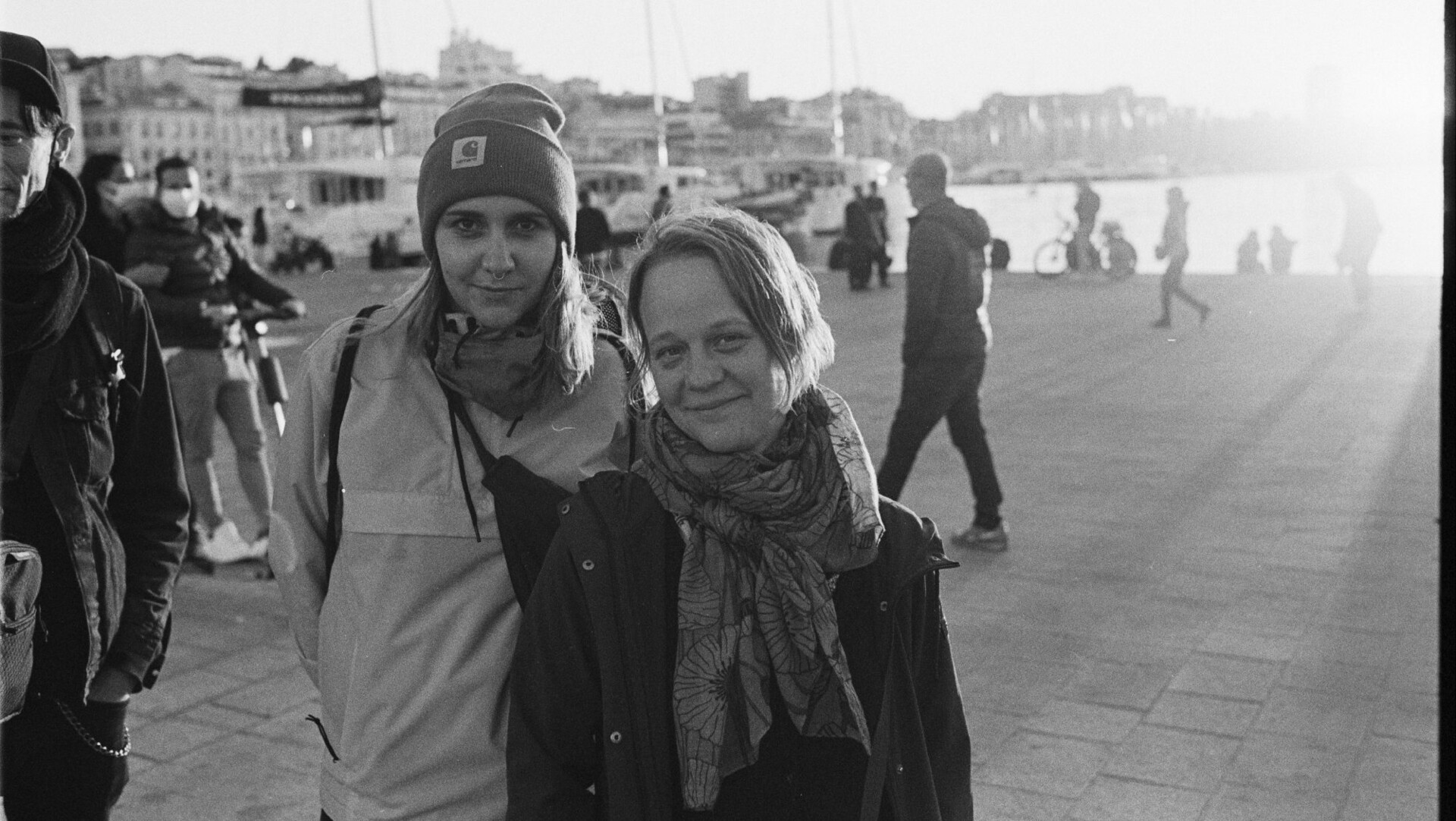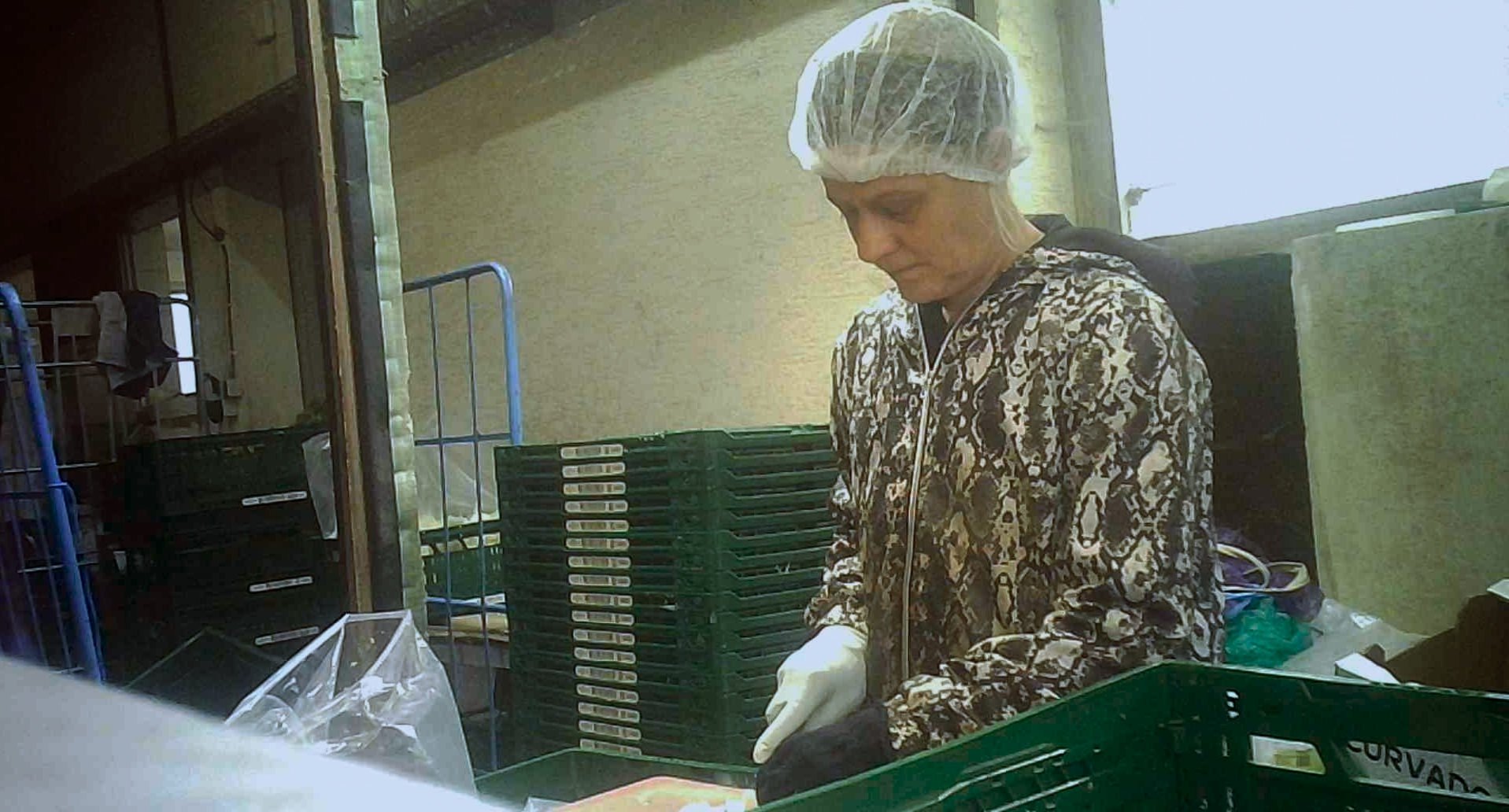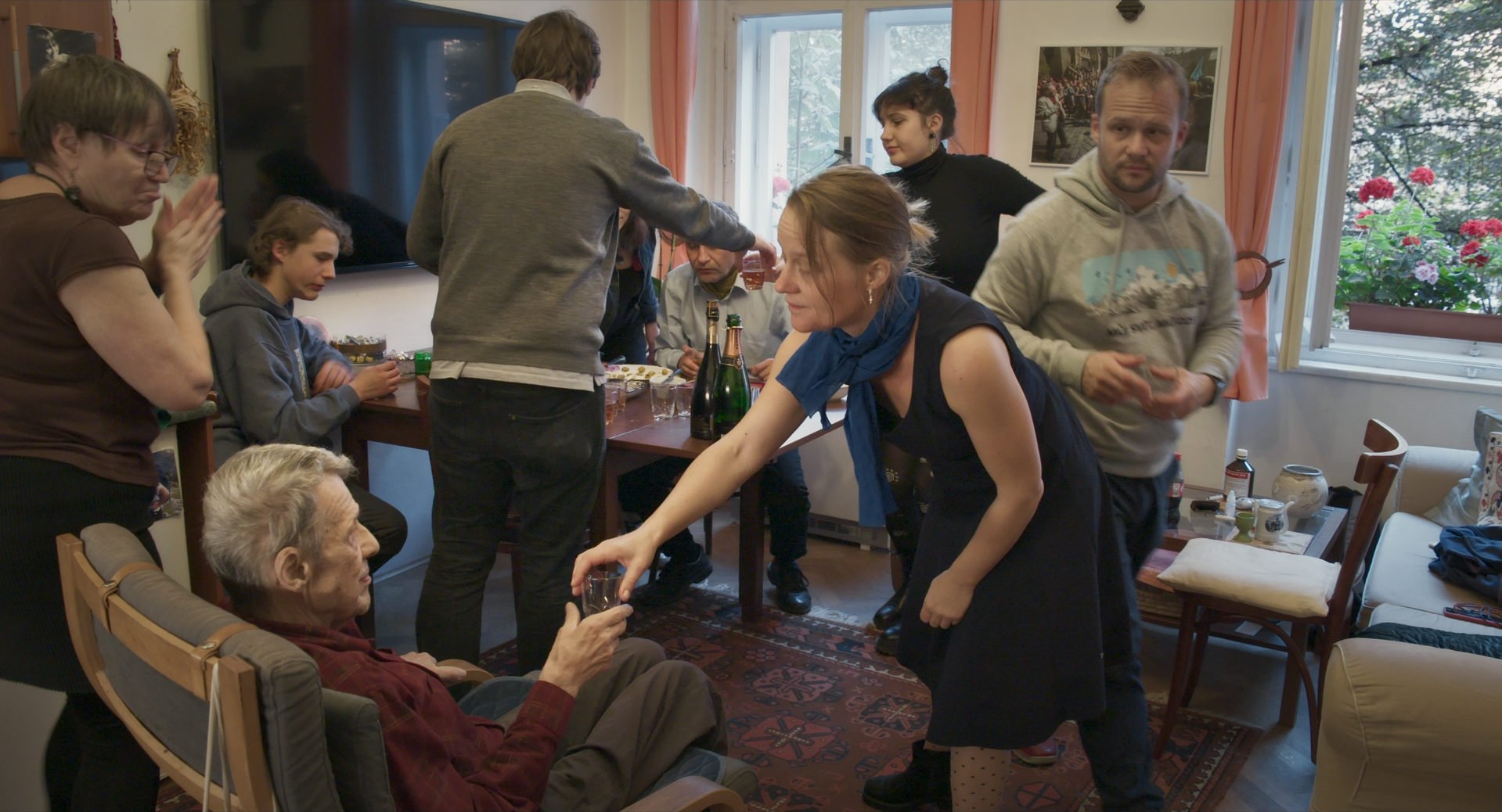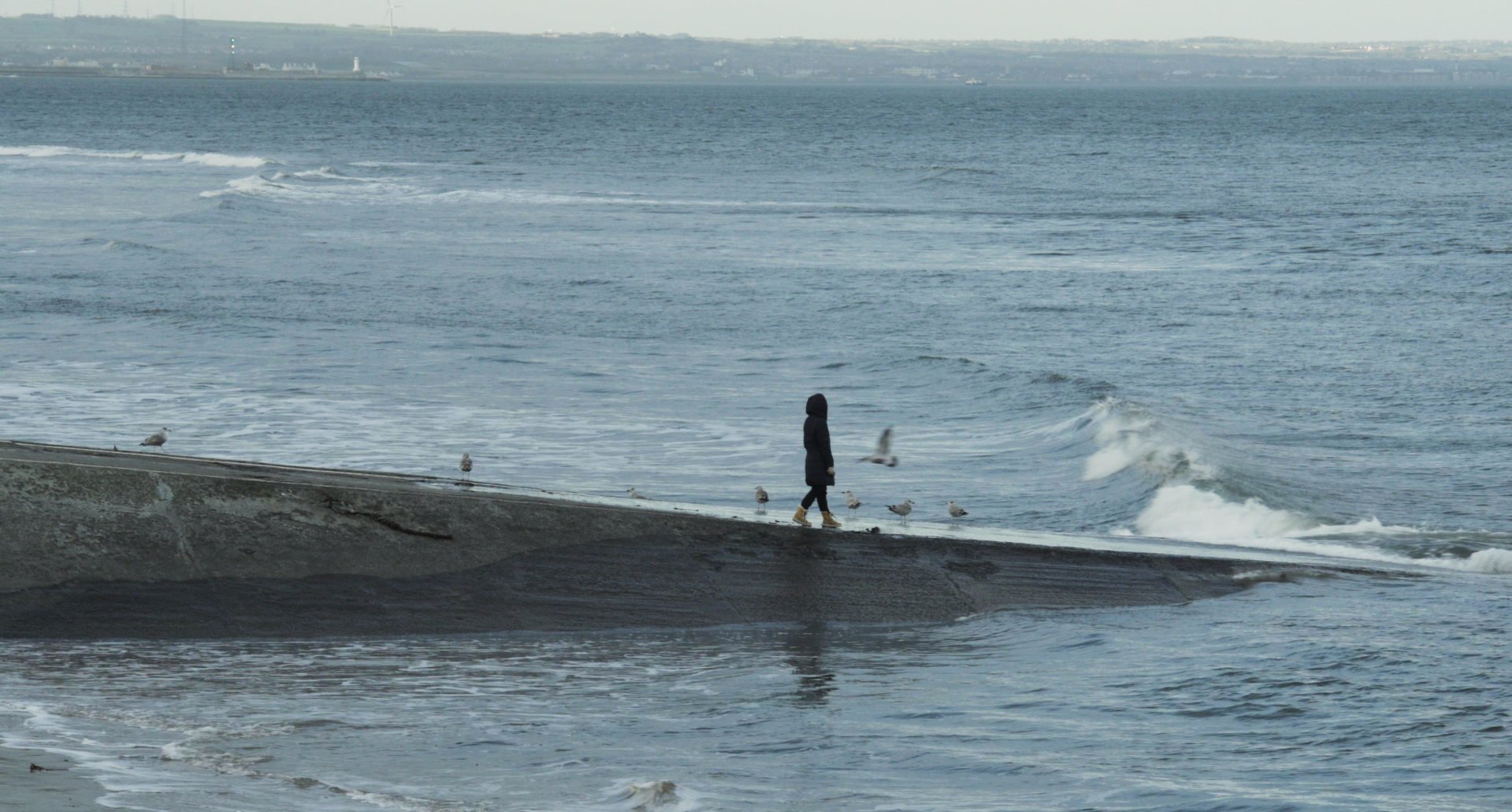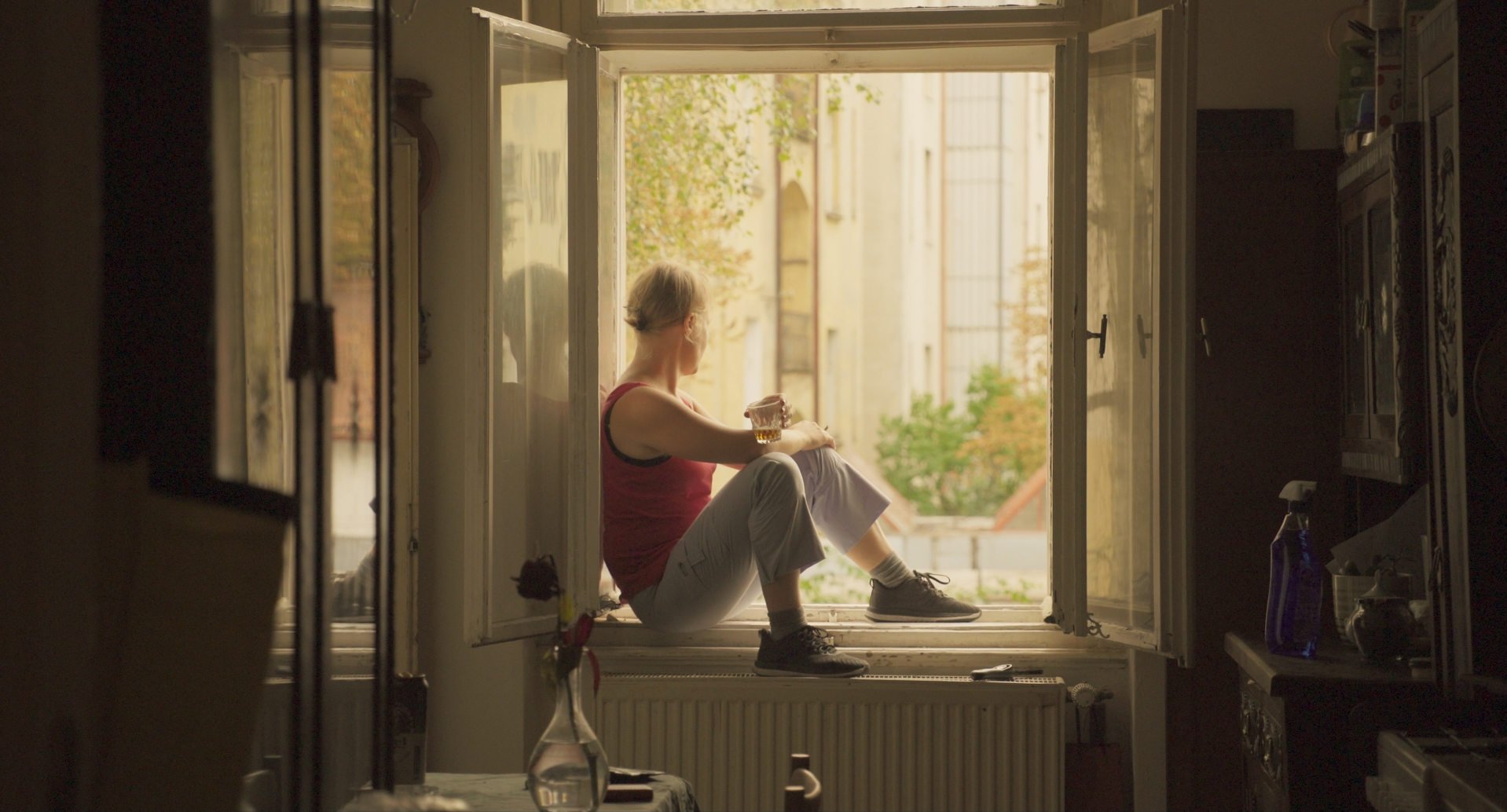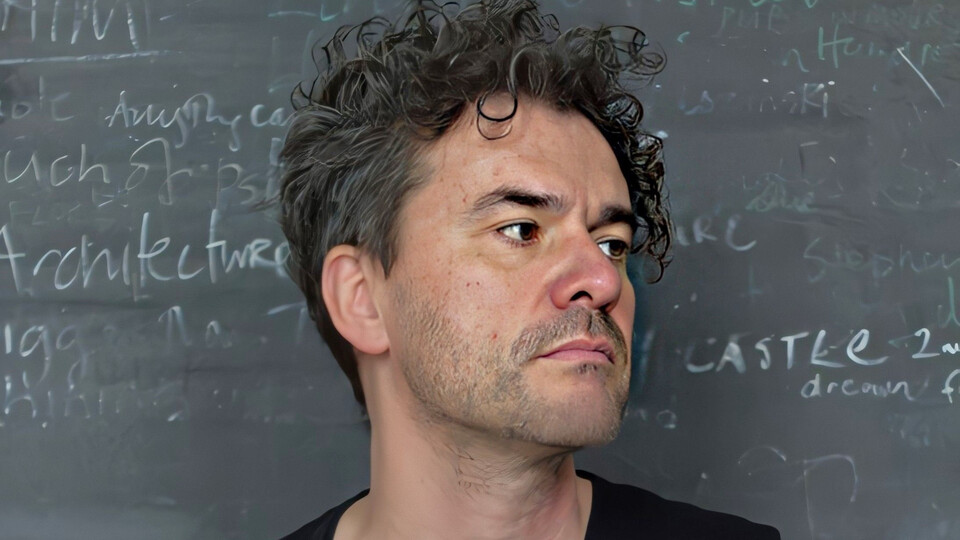Apolena Rychlíková. Telling stories that touch us all
Apolena Rychlíková’s new documentary Limits of Europe explores the price of Western prosperity. What was the hardest part of filming? How do the work of a documentary filmmaker and that of a journalist influence each other? Publicist Martin Šrajer spoke to the director about her newest film, which premiered at CPH:DOX.
Seven years ago, Apolena Rychlíková and Saša Uhlová examined unsatisfactory working conditions in Czech companies, resulting in the series of journalistic reports The Heroes of Capitalist Labour and the film The Limits of Work. In the following interview Rychlíková describes the creation of a loose sequel entitled Limits of Europe, which was once again preceded by texts by Saša Uhlová. This time, Uhlová found herself in the position of an economic migrant, working successively on a German farm, in an Irish hotel, and as an in-home caregiver in France. She kept a diary the entire time and filmed everything with a hidden camera. Like other workers, she faced bullying, humiliation, physical and mental exhaustion, and extreme working hours – sometimes for the simple reason that supermarkets had just launched a sale on lettuce. Because of her work abroad, Uhlová also struggled with feelings of separation from her children, her partner, and her ailing father, Petr Uhl [a renowned journalist and human rights activist –Ed.], whose ideological legacy is interwoven throughout the film. This honest testimony about people who contribute to Western European prosperity through their low-paid work is thus also an intimate story about family, care, and shared responsibility. The film had its international premiere at Copenhagen’s CPH:DOX festival, and its Czech premiere will take place at the festival One World.
When and where did you get the idea to make a sequel to The Heroes of Capitalist Labour, or rather, The Limits of Work?
When we screened The Limits of Work in Budapest sometime in 2018, after the film one Hungarian journalist asked us when there would be a sequel. We didn’t really know what to tell him. This was in part because we were travelling a lot with the film, which was a big burden on us, especially because we have children. And he came up with the idea that the sequel could focus on the conditions of Eastern European guest workers in the West, which seemed quite logical to us. That very evening we started thinking about how we could make it happen.
Did parenthood – which is now becoming a hot topic for women filmmakers – have any kind of influence on Limits of Europe?
All of the women in the film crew have children, and I think that sensitised the handling of the given subject. That’s not to say that people who don’t have children aren’t sensitive towards certain topics, but with The Limits of Work, for example, the fact that Saša had to leave her family every morning wouldn’t have been so significant to me otherwise. To me, Limits of Europe is also quite gendered, even though that’s not its focus. The care and emotional burden of mothers seeped into it a lot. But at the same time, it’s also the story of Saša’s partner Tomáš, who had to gain the confidence to care for their children and provide them with a great support system so that Saša could leave without worrying.
How did the development of the film progress after the initial idea was conceived?
Still back in 2018, I took the idea to Hypermarket Film, meaning to Vít Klusák and Filip Remunda, who created the series Czech Journal, of which The Limits of Work was a part. I knew that Czech Journal wasn’t going to continue, and so I decided to go the route of a feature-length film so that the financing would be more secure, because I knew it was going to be difficult. We had made The Limits of Work on a shoestring budget – it was a really cheap film – and I didn’t want to shoot that way again.
So, we made a deal with Hypermarket. I also outlined my vision to Josef Šlerk, the director of the Endowment Fund for Independent Journalism at the time, and with funding secured, we gradually started to put together the creative and production teams and a concept of what the film would look like and in which countries it would take place. Quite quickly we received support from the Czech Film Fund and Arte [a European TV station focused on culture –Ed.], but just as we were about to start filming, Covid interrupted everything. We had a well-funded project, but we had absolutely no idea if we would be able to go abroad to shoot – or to return from abroad – because the pandemic was raging in Europe.
So, I assume the filming was not continuous and had various breaks?
It was very fragmented, which was mentally challenging for me and for Saša because we didn’t know if and when the borders would open, how the situation would change or not change, if someone would get infected… It brought a whole different dynamic to the shoot and also made it very expensive. And just when it looked like Covid was finally gone, the war in Ukraine started. At that point we were about halfway through the shoot. The war mainly created a psychological barrier. Saša was supposed to leave for one of the filming locations in February 2022, and about three days before that the invasion started, so we cancelled.
Did you have to make any changes to the original plan because of the war and Covid?
In terms of the choice of individual jobs, not really. But at one point, for example, we decided not to take the risk of filming in a factory in Britain that had had a series of scandals with a lot of people being infected due to non-compliance with sanitary measures.
According to what criteria did you choose the jobs this time?
We saw them as thematic units. In addition to focusing on certain types of Western economies where people from the East most often migrate for employment, we tried to capture three fields that we thought Czechs had experience with. These were seasonal agricultural work in fields, tourism – which we also know from the other side as tourists – and, lastly, social services. Caregiving is one of the largest sectors where economic migrants are employed. Like with The Limits of Work, we weren’t interested in “bullshit jobs” but rather in jobs that we as a society cannot do without and which are often, paradoxically, the lowest paid.
Does that mean that the narrative structure matches the script? Did you shoot in the same order that we see in the film?
I had the script written out in a similar way to a feature film because I wanted to be very much in control. For example, I knew the film should start and end at the seaside, and I came up with individual scenes that would work in sequence. Even the order of the locations in the script matched how they proceed in the final film. However, what happened within them was subject to the randomness of documentary filmmaking.
How did you think about the narrative concept? Because the dramaturgy really resembles a feature film in its cohesion.
This film has a kind of pyramidic structure. On the farm in Germany, it’s a big field and a huge mass of people, where everyone is basically replaceable. In the Irish hotel, it’s a more compact organism with a certain hierarchy. The biggest advantage was that there were Slovaks working there, and we could tell them we were making a film and have a conversation on camera with people who were experiencing this situation first-hand. They are no longer anonymous faces. And we end the film with individuals, with lonely seniors in France, whom Saša is also taking care of by herself.
Moreover, different age groups are represented in the film in this way. In Germany it’s mostly middle-aged people, in Ireland it’s people in their twenties, and in France it’s senior citizens.
Yes, migration is experienced differently by a person who is twenty years old and freely decides to go somewhere to earn some money and maybe learn the language as opposed to someone who is forty or fifty and remains separated from his family, perhaps even until he retires. He doesn’t see his loved ones for months, and he just mechanically sends them money.
As far as the script is concerned, did the domestic producers or foreign co-producers have any special requirements as to what should or shouldn’t be in it?
They gave me a very free hand, but I knew from the beginning that the element of chance would play a big role. And, for example, the French part of the production arranged perfect filming conditions for us. They drove around the places where we were going to shoot ahead of time and provided us with a driver who would bring us snacks or stand over us with an umbrella when it was really hot. In terms of the production itself, it was a great experience.
The debate came after the shoot. It wasn’t about how the film was edited but about the off-screen commentary, the passages read from Saša’s diary. So, for French-speaking countries, a commentary was created that explains a little bit more about certain connections. But it was a productive discussion that forced me to think, for example, about the film’s exposition, about how to make it accessible to people who don’t know anything about Saša and therefore can’t connect emotionally to certain situations.
Overall, I think the outside perspective helped the film, and I’m grateful for it. Without it, the film might not have been as comprehensible to a foreign audience. And I was surprised by the producers’ anti-capitalist approach, because they pushed a lot on the political dimension of the debate about working conditions. Thanks to the film, they themselves received feedback on the situation in their countries – a kind of “reality check” which gave rise to the provocative question in the subtitle: Who pays for Western prosperity?
How important was your collaboration with dramaturge Klára Tasovská when you were thinking about the final shape of the film?
A lot of the material was filmed by Saša using a hidden camera in her glasses, and it wasn’t really possible to direct it. That’s also why I wanted to have a solid dramatic arc that I would have control over. I knew from the beginning that I wanted to work with both Klara and the editor Katka Vrbová. Klara has such subtle dramaturgy. She doesn’t force you into anything; she creates space for you. But she liked the script, so what was more important then was to work with her in the editing room, where we decided what to cut, how to balance it.
And Katka – who in my opinion is one of the best Czech editors – has a very intuitive editing style and knows how to capture the emotion that a scene is supposed to convey. At the same time, she isn’t afraid to make bigger cuts, so the film was edited a lot, but maybe it’s not so noticeable in the end. But that’s the proof of a good editing job: that we don’t notice the editing, even though in the case of Limits of Europe it took several months. We had hours and hours of footage from hidden cameras, and everything had to be put together into a functional whole. It occurred to me that with documentary film, the editor is basically a second director.
“It occurred to me that with documentary film, the editor is basically a second director.”
How did filming with a hidden camera work from a technical perspective? Was it the same as in The Limits of Work?
Saša again used glasses with a hidden camera and a thermos that captured wide shots of her as she worked. I’d like to highlight her contribution because when we were filming The Limits of Work, I would give her instructions that turned out to be hard to follow in reality. For example, I told her to stand in a certain place and count to ten in her head so that we would have an unbroken stationary shot. But after five seconds the supervisor came over and asked her why she wasn’t doing anything, so that didn’t really work. But Saša quickly taught herself to use the hidden cameras creatively, and so we have, for example, a ride filmed from on a tractor. She made my job a lot easier with ideas like that and with her essentially cinematic thinking, because we got some very expressive shots even with limited tools. With the elderly people she was taking care of, we practiced how to do it sensitively so that we only captured parts of their bodies, not their faces. This was very crucial for us, and I wrote it that way myself in the first version of the script.
So, then, what was your role during filming at each of the individual locations abroad?
I had a very narrow scope of what I could shoot. That was different from The Limits of Work, where Saša would come home at the end of her shift. In this case, she stayed abroad for several weeks. So I would at least accompany Saša to the location, pick her up, and mainly spend time with her in the interim, when it was possible to shoot various connecting shots such as tram rides, getting up in the morning, et cetera in order to capture the routine of a person working a low-wage job.
An important motif in the film is Saša’s relationship with her father, Petr Uhl, and by extension the motif of caring for a loved one. Is this a storyline that you knew you wanted to include from the beginning, or was it a rection to real events?
We wanted to capture how psychologically demanding it can be to leave your family environment – especially when a loved one is ill – because this is a topic that is closely related to labour migration. It wasn’t easy to film this, and from the beginning I knew I had to consider the possibility that Saša’s father would die. His health was one of the reasons why Saša hesitated to go to Britain. In the end he told Saša that it would actually make him happy if she didn’t tie herself to him. And although he was not in good health, he also agreed to let us film him.
In any case, the family storyline was important to me. Similar to the first film, where we watched a woman who had to leave her five-year-old child to work long shifts, here we showed another phase, when the children are older and the woman is taking care of her sick parents and knows that they are the ones who will inevitably leave her.
I’m also glad that there was no pressure from the dramaturge or producers to emotionally exploit the passing of Peter Uhl, because I hate parasitising on human misery. Plus, it would have overshadowed the theme of work and turned it into a completely different film.
How did you decide when and how to incorporate the music by Jonatán Pastirčák, a.k.a. Pjoni?
From the beginning, I wanted Jonatán to do the music. He composed the score to my first student film back at FAMU, so it’s funny that we met again like this professionally years later. In my eyes, he is one of the best composers of film music in our country. He didn’t have an easy job, because first we had to make a rough cut without the commentary, then we recorded the commentary, which involved various edits and rewrites, and then he had to fit the music into this space that was overloaded with information. This was done sometime during the final third of post-production, when it was clear where the story was going to go, roughly how the commentary was going to be conceived, and how much space there was going to be for the musical sections. I think he did it very sensitively, managing to bring out the emotion of the scenes while maintaining a certain rawness.
Your film premiered at the documentary festival CPH:DOX in Copenhagen. Was this event your goal from the outset?
I was finishing the film in March last year, so it was clear that we wouldn’t make it in time for last year’s festival. This was most disappointing for Klára Tasovská, who believed that we would be selected, because she has a good nose for these things. But because the film took quite a long time to be finalised, we tried for this year’s CPH:DOX and it worked out. Right after that, we were selected for the festival in Geneva, which was very reassuring for me. As I don’t shoot very much, I’m not very confident in myself, but after we were accepted to these two festivals, I thought maybe the film wasn’t stupid, maybe I was panicking for nothing.
At the same time, that probably means that the film is universally understandable.
Yes, although this isn’t a topic of great interest at the moment. People are focused on completely different issues, such as the war in Ukraine or the situation in Gaza. This is a timeless topic, but it is outside the mainstream attention of the Western world – unlike, say, the climate crisis or gender issues. The labour market is not particularly interesting to festivals. Their programmers think in certain cycles or react to current events, and some films just don’t fit with that, whether it’s due to their subject matter or country of origin. But I think we touched on something important.
There has also reportedly been a great deal of interest in Limits of Europe in the regional cities involved in One World, whose representatives wanted to show the film in their cinemas. So, people may be feeling the lack of representation of this topic in our country as well.
Kateřina Nedbálková described it nicely in her book Tichá dřina (Silent toil), about the conditions of workers in the Baťa shoe factory. She says that there is zero academic interest – or, more generally, zero interest on the part of the more privileged segment of society – in manual labourers, so the topic does not even make it into the media. Workers’ stories and the class perspective have completely disappeared from the public space. But I’m pleased with the interest in the different regions; I didn’t expect there to be so much. It was understandable with The Limits of Work because almost all of us have a family member who works in a factory or behind the cash register in a supermarket. But we tend to marginalise labour migration. We’re also not a country where people leave en masse to work abroad, so I was surprised that this resonated here too.
How did you think about the distribution strategy? Do you plan to try to contextualise the film more broadly through some kind of accompanying discussions?
We definitely want to engage people who are dealing with this issue and add a perspective which is not present in the film and which some viewers will be calling for – that being suggestions for solutions to the conditions that are being depicted. The film itself is very personal and intimate; it’s not a political manifesto about exploitation but rather the story of one woman who, through her journey, comes to know herself.
When you look back at the entire shoot, were there any moments of crisis?
I don’t want to exaggerate, but I think the whole shoot was a crisis because it took place during Covid and then during the war. It was also hard for me to tell Saša exactly what I needed of her because, even though we are close friends, I was always wondering if I was in some way exploiting her as a social actress by putting her in unpleasant situations. Saša was also burdened by the demands of her job as a journalist. So, I kept running into the limits of my own work as a documentary filmmaker. It wasn’t until I was in the editing room that I realised it had probably made sense to heavily direct it like that.
When you mention journalism, which is your primary field, how do you think about this role yourself? Are documentary filmmaker and journalist two separate roles for you, or do they overlap in some ways?
Journalism allowed me to put one important thing into the film. I managed to write the treatment in record time and in a way that was easy to read. This made me realise that as a journalist I have trained myself to a kind of automatism, where I am able to describe precisely and concisely what I want something to look like, which then comes in handy when applying for money from various funds. That’s something they don’t teach you at FAMU – not only thinking visually but also translating it onto paper so that it’s understandable to others. I think that’s a shame.
On the other hand, when I write an article, I visualise the text as a film and think a bit in terms of filmic narrative so that it has a dramatic arc. So, for me, they are separate but at the same time somewhat unconsciously connected vessels in which I take the skills I’ve adopted in one profession and use them in the other.
Last year the Czech Film Fund supported the development of the first version of the screenplay for your feature film Krystaly (Crystals), which is a look into the life of a girl addicted to meth. Do you see fictional storytelling as an imaginary next step in your career, or was it a decision conditioned more by the subject matter?
While making Limits of Europe, I realised how challenging it is for me to do documentary work with real people. I can handle it as a journalist, when I can spend some time with these people in a relaxed environment, but filming, which is more hectic and involves me putting people in certain roles, is really stressful for me. That’s one of the reasons I tried to write a feature film. We’ll see if I’ll be able to direct it as well – I’d love to. But I haven’t completely given up on documentary filmmaking. I am currently working on a film, with Klára Tasovská as dramaturge and Lukáš Kokeš as producer, about the sterilisation of Romani women. It has a journalistic strand as well, but it’s shifting more towards an essay. I’d also like to pursue literary journalism; Jakub Zelenka and I are writing a book about the Dominik Feri case. I think the unifying motif behind everything I do is the attempt to clearly and truthfully tell stories that touch us all.

